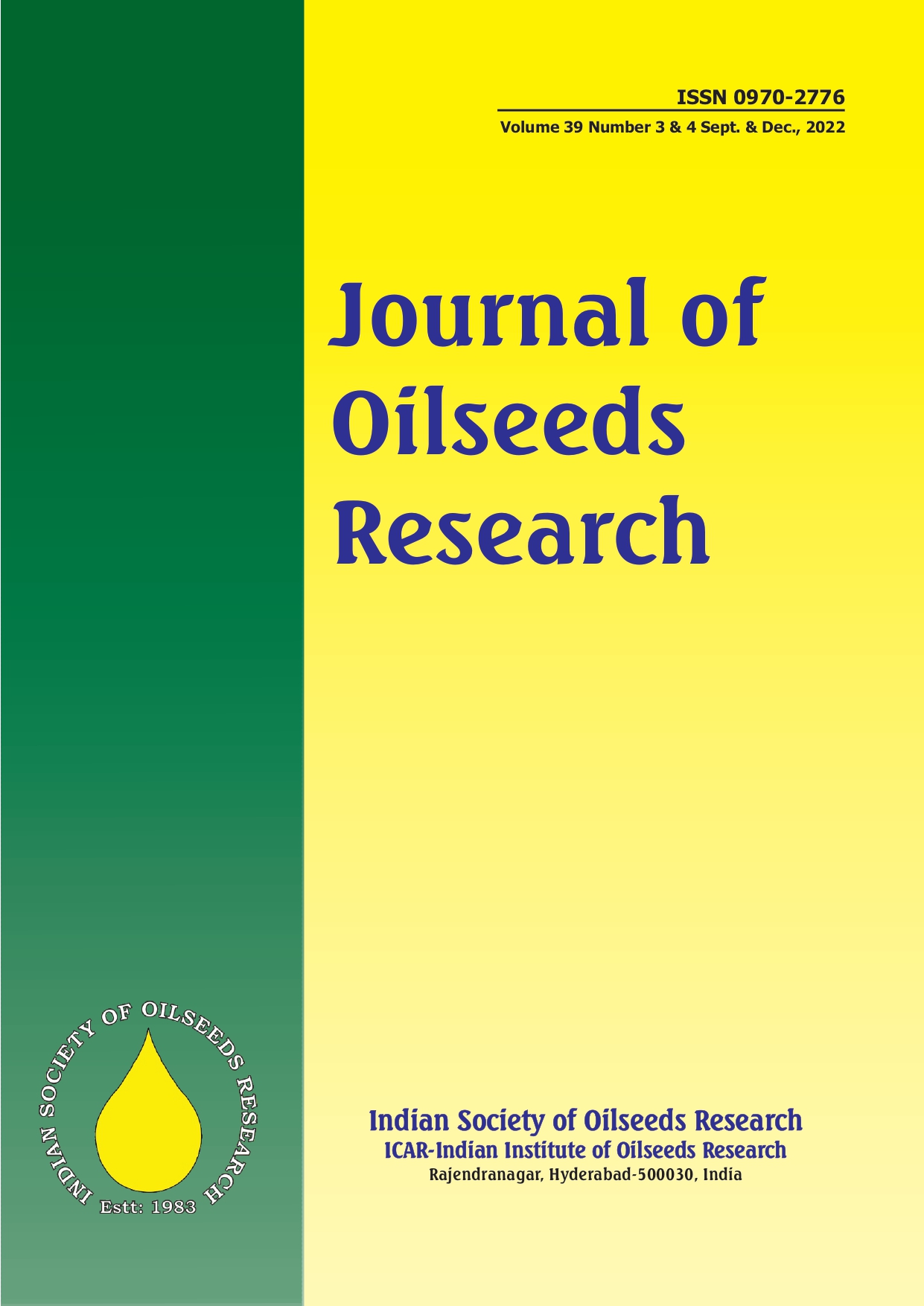Evaluation of biorational insecticides against capsule borers, Helicoverpa armigera and Heliothis peltigera (Lepidoptera: Noctuidae) on safflower
EVALUATION OF BIORATIONAL INSECTICIDES AGAINST CAPSULE BORERS ON SAFFLOWER
83 / 1
Keywords:
Biorational insecticides, Helicoverpa armigera, Heliothis peltigera, Noctuidae, SafflowerAbstract
Safflower capsule borers, Helicoverpa armigera (Hübner) and Heliothis peltigera (Denis and Schiffmüller) (Lepidoptera: Noctuidae) were considered as economically important pests of safflower. The present study was undertaken to evaluate the biorational insecticides (chlorantraniliprole 18.5 SC @ 0.15 ml/l, Beauveria bassiana @ 4.0 g/l, Metarhizium rileyi @ 4.0 g/l, commercial B.t. (Dipel) @ 2.0 ml/l, commercial neem product 1500 ppm @ 2.0 ml/l and indoxacarb 15 EC @ 0.3 ml/l) against these pests on safflower during rabi 2020-21 at Krishi Vigyan Kendra, Bidar, Karnataka, India. The results indicated that all the treatments were superior over untreated check in reducing the capsule borers population. Among the tested products, chlorantraniliprole was found to be effective in suppression ofthe capsule borers, recorded lower population (0.11 larvae per plant) with higher yield (10.47 q/ha) and benefit cost ratio (1.96), followed by indoxacarb and commercial B.t. product, recorded 0.20 and 0.23 larvae/plant, 9.44 q/ha and 8.75 q/ha and benefit cost ratio of 1.82 and 1.63, respectively.
Downloads
References
Akashe V B, Gud M A, Shinde S K and Kadam J R 2013. Biodiversity of insect pests of safflower and their natural enemies in Maharashtra. Bioinfolet, 10: 1389-1392.
Bharaj G S, Deshpande S L and Saxena M K 2003. Field screening of safflower genotypes for resistance against safflower aphid (in) National Seminar on Stress Management in Oilseeds held during 28-30 January 2003 by Indian Society of Oilseed Research, at Indian Institute of Oil Seed Research, Hyderabad, 28: 126-127.
Biradarpatil K A and Jagginavar S B 2016. Bio efficacy of newer insecticides molecules against safflower capsule borer, Helicoverpa armigera (Hubner). Journal of Farm Science, 29 (1): 117-118.
Chaitanya P, Srinivas P S and Saxena A K 2019. Identification of sources against Aphid, Uroleucon compositae (Theobald) in safflower. Journal of Oilseeds Research, 36 (3): 199-202.
Esfahani M N, Alizadeh G, Zarei Z and Esfahani M N 2012. The main insect pests of safflower on Various Plant Parts in Iran. Journal of Agriculture Science and Technology, 2: 1281-1289.
Hanumantharaya L, Balikai R A, Venkateshalu, Basurajappa, M P and Somanagouda G 2009. Insect pest status of safflower and their natural enemies in Karnataka. Karnataka Journal of Agricultural Sciences, 22 (3): 678-679.
Kumar S S R, Kulkarni G G, Basavanagouda K and Mallapur C P 1999. Insecticidal property of some indigenous plant extracts against lepidopterous pests of safflower. Annals of Agri Bio Research, 4 (1): 49-52.
Mallapur C P, Parameshwarappa K G, Kulkarni M S, Hulihalli W K, Kubsad V S and Gulaganji G G 1997. Pest scenario of safflower in the dry tract of Karnataka. Journal of Oilseeds Research, 14 (2): 300-303.
Mohankumar 2015. Biology and management of safflower leaf eating caterpillar, Perigea capensis Guen. (Lepidoptera: Noctuidae). M Sc Thesis, University of Agricultural Sciences, Dharwad.
Patil R H and Halolli S P 2005. Safflower: A unique crop for oil spices and health consequently, a better life for you (in) Proceedings of the 6th International safflower Conference, held during 6-10 June 2005 at Istanbul, Turkey, pp. 229-235.
Singh V, Prasad Y G and Lakshminarayana M 1999. Insect pests of safflower and their management. In: Upadhyay R K (Ed.) IPM system in Agriculture, Volume 5, Oilseeds. Aditya Publications, New Delhi, India, 552 p.
